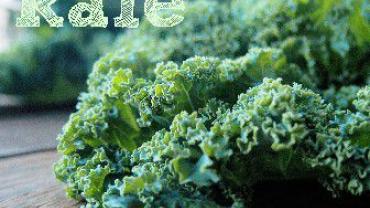
When health food superstars are discussed kale is bound to be at the forefront of conversation. Even those that don't identify themselves as health food advocates are likely to associate kale with the term health food. More common today than ever before kale now owns its rightful place among spinach and lettuce at the grocery store as more and more Americans are now adding this food to their normal cuisine.
Kale has come to refer to a variety of cole plants which encompass an assortment of vegetables belonging to the Cruciferae or mustard green family. While little is known about its origins kale has a history of use going back at least 2000 years. In ancient Greek times kale and other leafy greens were boiled and eaten as a cure for drunkenness. By the Middle Ages it was widely grown across Europe and Asia but saw a decline in popularity that has only recently begun to revive in the last 60 years. During World War II kale became part of a Dig for Victory campaign in the U.K. due to its easy cultivation and beneficial nutrients that were hard to obtain through war rations alone. Kale also has a history of use on farms in the coastal areas of the U.S. because it is able to draw salt up into the body of the plant thereby preventing the mineralization of the soil.
Few greens can boast such a magnificent nutrient panel as kale making it an extremely nutrient-dense food. Chief among its nutrients are the mighty antioxidants; one cup of fresh raw kale supplies approximately 10000 IU of vitamin A primarily in the forms of beta-carotene lutein and zeaxanthin. Beta-carotene's potential anti-cancer properties have been studied for decades. Whether by protecting tumor cells from reactive oxygen species leading to carcinogenesis and angiogenesis necessary for tumor cell metastasis or by regulating cell proliferation and inducing apoptosis beta-carotene is a paramount nutrient in a health-promoting the diet
Lutein and zeaxanthin are both carotenoids that have been studied rigorously for their roles in eye health. Playing various protective functions these two carotenoids are established within the human retina and not only scavenge free radicals thereby protecting individuals from developing age-related macular degeneration and cataracts but also guard against the damage caused by blue light. Fluorescent lighting computer and video screens cell phones and even alarm clocks emit damaging blue light that contributes to modern eye degeneration.
Kale also provides an impressive amount of vitamin K containing 547 micrograms per one cup serving. Vitamin K is most often associated with blood clotting but it has also been studied as an influential nutrient in bone mineralization. Postmenopausal women with risk factors for osteoporosis and patients with anorexia nervosa have presented with deficient vitamin K levels contributing to bone loss. Vitamin K acts as a cofactor for osteocalcin carboxylation which precedes mineralization. Low vitamin K levels therefore contribute to an increase in undercarboxylated osteocalcin leading to inadequate mineralization. Research shows that adequate vitamin K may help to reduce fractures in osteoporotic individuals.
Many people may not consider a leafy vegetable such as kale to be a good source of amino acids; however this superfood does indeed sport a notable amino acid profile compared to other vegetables. Kale contains all nine essential amino acids making this an indispensable food for vegans and vegetarians. It is also supported by several non-essential amino acids and contains all but two of the twenty amino acids present in protein. Therefore anyone who needs a protein boost including body-builders and immune-suppressed individuals can benefit from kale.
Another unique nutritional quality of kale is the presence of omega-3 fatty acids. Generally thought as a nutrient only found in fish seafood and flax kale takes its place among omega-3 foods. Kale actually contains more omega-3 fatty acids than omega-6 fatty acids which is rare among vegetables.
So what is all the fuss about kale? It is quite simply a macronutrient-packed superfood that not only contains the expected vitamins and minerals but also has a hidden supply of amino acids and fatty acids. These attributes make kale a remarkable addition to any healthy diet.